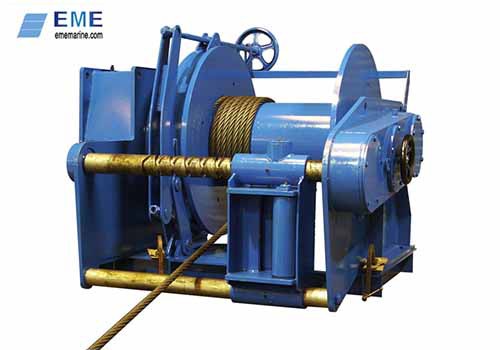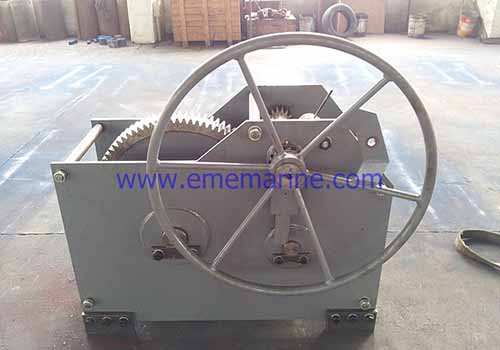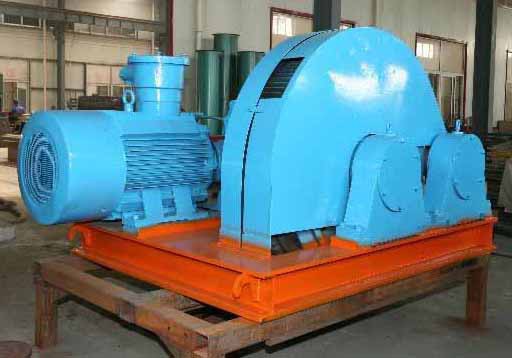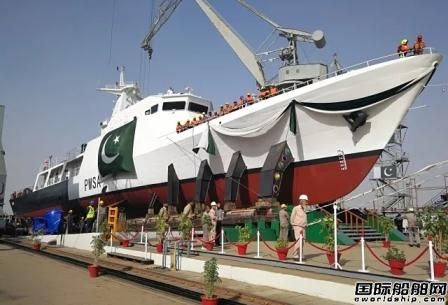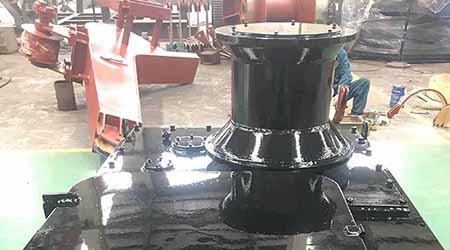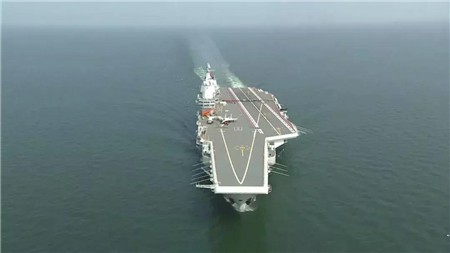
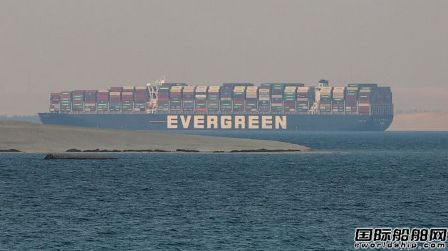
The Suez Canal has finally ended its "congestion", but the "Chang Chi" ship, which has been out of trouble for a week, is still stranded in the canal's anchorage under investigation, and the "tug-of-war" over claims surrounding the grounding has become a focus of attention. The "tug-of-war" over the grounding has become the focus of attention.
SCA hopes to reach financial settlement with Chang Chi owner as it seeks US$1 billion
The Suez Canal Authority (SCA) director Osama Rabie said in an interview with the Associated Press on June 6 that the Egyptian authorities are in economic settlement talks with the Japanese owner of the "Chang Chi" ship, Shoei Kisen, and hope that the two sides can reach an agreement without involving legal proceedings.
Rabie said, "We are discussing with Shoei Kisen to resolve this issue peacefully without resorting to legal action." He insisted that taking the case to court would be more damaging for CZV than reaching a settlement with the canal authority, Rabie did not say who should bear the compensation. He also said that the canal authority and the owner of the Chang Chi ship had maintained good relations in the past.
Previously, Rabie had said that the Suez Canal Authority's claim was expected to be in excess of US$1 billion, an amount that covered salvage operations, traffic congestion and the cost of the ship's passage to Egypt over the week that the ship blocked the Suez Canal.
Rabie said that if the investigation went smoothly and the parties involved agreed to the amount of compensation, then the ship could continue on its way with no problems. He warned that the Authority would not allow the vessel and its cargo to leave the canal if the compensation matter turned into a lawsuit. However, Rabie did not specify which party would be responsible for paying the compensation.
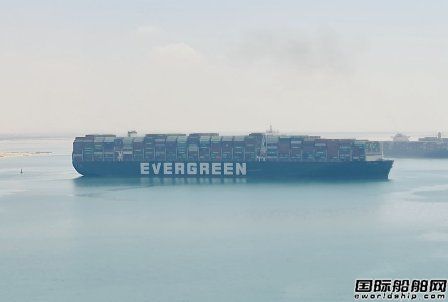
Since its release on 29 March, the vessel has been anchored in the Suez Canal waters of the Great Bitter Lake. The Suez Canal Authority launched an investigation into the incident on 31 March and the vessel will not be allowed to leave until the investigation is completed, and the 25 Indian crew members on board will not be allowed to change shifts for the time being.
"Rabie said that the VDR data had been handed over to the investigation committee and that once the investigation process was completed, the vessel would be able to continue sailing. "The vessel will be able to continue its voyage, "if circumstances permit, we will need another two or three days. But we will not take too much time".
Rabie declined to discuss the possible causes of the grounding, such as speed, strong winds, sandstorms etc. Rabie said he could not comment on the ongoing investigation.

In its latest statement, Rabie said that the Suez Canal Authority had been working to ensure the orderly navigation of the canal and had resolved the cargo ship grounding crisis through its own professional capabilities. The Authority deployed 15 tugboats and nearly 600 personnel from all departments of the Authority were involved in the crisis. He said that the resolution of the Panamanian mega container ship crisis showed the world the Suez Canal Authority's unique model for dealing with crises and the techniques of sediment dredging used in maritime rescue. These techniques are not known worldwide because of their high precision and the highest safety standards.
Last week, two officials from the Suez Canal Authority revealed that the accident on the vessel was caused by the captain's "incorrect manoeuvres that coincided with a sandstorm and strong winds", which caused the vessel's bow to veer significantly off course and "create a violent sway" before it fully entered the Suez Canal channel. This caused the ship to "sway violently" and "reduced visibility and ran the ship aground". They stressed that weather factors were not the entire cause of the accident, and that some 12 ships had passed safely through the Suez Canal in the same weather conditions before the "Chang Chi" ship.
According to the Egyptian newspaper Pyramids on April 6 local time, the analysis of the black box of the cargo ship "Chang Chi" is still in progress and the cause of the ship grounding is still under investigation.
Shipowners have declared a common maritime loss, Suez Canal claims are covered by insurance companies
In response to the Suez Canal Authority's "sky-high" claim, charterer Evergreen Marine has said that the compensation needs to be covered by the shipowner, Zheng Rong Steamship.
Evergreen Marine General Manager Xie Huiquan said at a press conference on April 1 that the accident occurred in the course of transportation and that, according to the contract, the shipowner was responsible for the situation and Evergreen Marine was "only responsible for the cargo itself, which is covered by the insurance company".
Can the 29-employee company afford to pay such a large sum of money? Executives of the company told the Japanese media that the company had not yet received a claim from the Suez Canal Authority and therefore could not respond to this question with certainty, but generally speaking, "the insurance we have will cover the cost".
"The insurer for the vessel is the UK P&I Club, which is a member of the P&I Club International. Under the P&I Club claims system, the UK P&I Club will cover up to US$10 million, with claims in excess of US$10 million being shared among the 13 members of the P&I Club Group and claims in excess of US$100 million being covered through the P&I Club Group's reinsurance programme, which has a maximum coverage of US$3 billion.
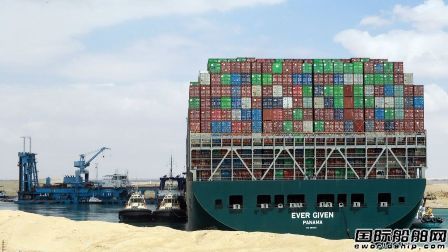
Some experts say that the Suez Canal authorities should not let the vessel leave the canal so easily in order to secure an effective right of recovery. However, legal proceedings would be time-consuming and the most feasible course of action would be for the shipowner's liability insurer, P&I, to issue a guarantee to the satisfaction of the authorities. The vessel will only be allowed to leave once the guarantee is obtained, and as the vessel is still detained in the canal, it will depend on the speed with which P&I can provide the guarantee. In fact, the canal authorities have the leverage to control the vessel, which cannot pass through the Panama Canal, but will continue to pass through the Suez Canal as long as it continues to operate.
In addition to the Suez Canal Authority's claim, the second major claim facing the vessel was for payment of salvage companies. Nippon Salvage, a leading Japanese salvage operation, and Dutch salvage specialist SMIT Salvage were jointly employed under a standard Lloyd's Register salvage contract (LOF) to remove the vessel from the water, which means that the bill will be split between the property insurers of the hull, cargo and fuel.
The salvage company's bill is expected to be significant given the complexity and time consuming nature of the salvage work and the value of the cargo and hull of the vessel. Previously, on 1 April, CZV had filed a joint marine loss claim, declaring the six-day-long towing operation of the vessel as a joint marine loss and appointing a joint marine loss adjuster, Richards Hogg Lindley, to collect the relevant joint marine loss guarantee. As the arbitration action was unlikely to be concluded within six months, the salvage company had to obtain full security to secure its claim before releasing the cargo. All cargo must be secured before it reaches its destination, otherwise it cannot be collected.
It is understood that the vessel is carrying more than 18,000 containers with a total cargo value of approximately US$3.5 billion. According to Bloomberg, the grounding of the Chang Chi will lead to a series of mutual liability insurance claims: the owners of the cargo on board and the owners of the cargo on board the other stranded ships will claim from their respective insurance companies; these insurance companies will claim from the Zheng Rong steamship; and the Zheng Rong steamship will go to its own insurance company to resolve the problem. An intricate claims "tug-of-war" has just begun.
Taixing Expansion Marine Equipment (EME) is the professional designer, manufacturer and exporter of mooring winch, positioning winch, towing winch, anchor winch, diesel winch, electric windlass, hydraulic windlass, diesel windlass, electric capstan, hydraulic capstan, pneumatic capstan etc. Our products are mainly for scientific research vessel, navy vessel, working barge, tug, cargo vessel, oil tanker, offshore platform etc.
